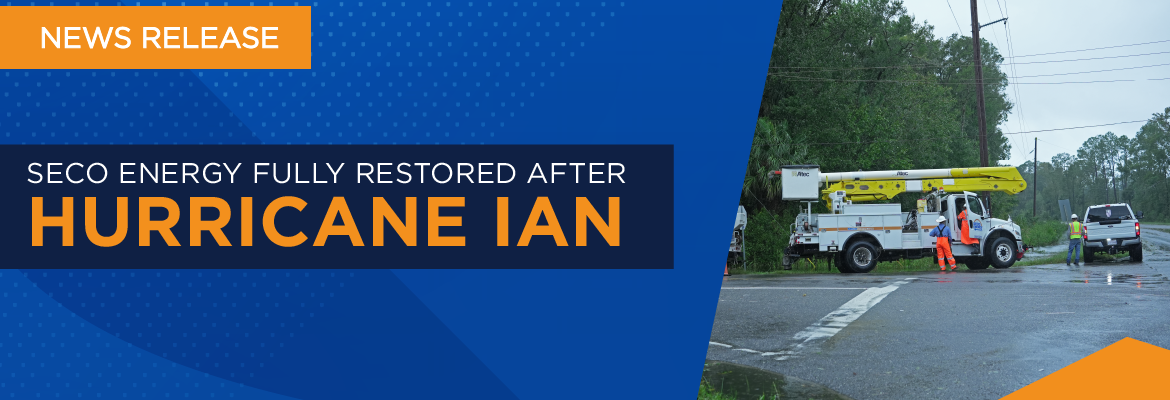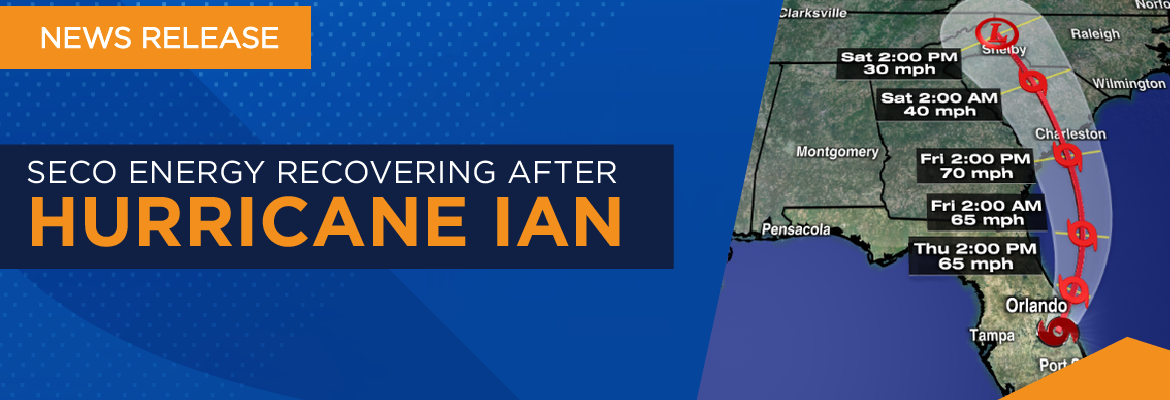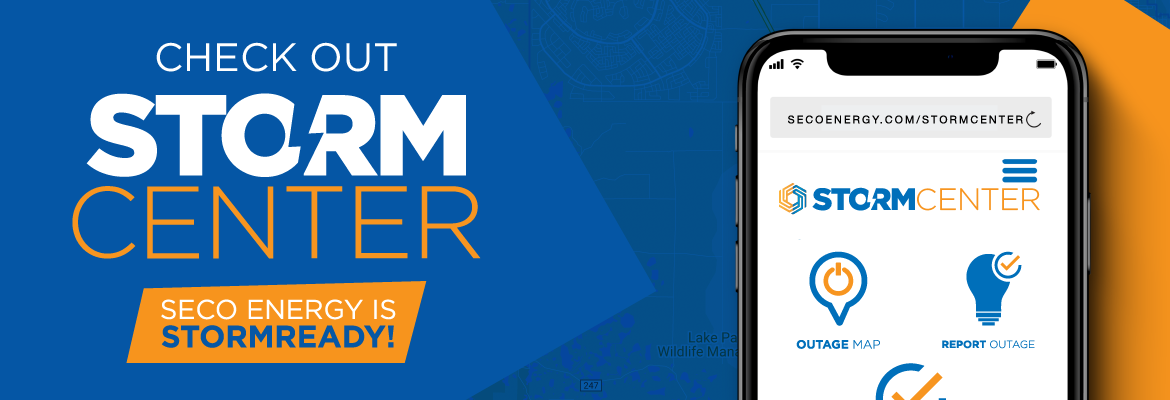SECO Energy Fully Restored After Hurricane Ian
SECO Energy has restored electric service to all accounts after Hurricane Ian charged through its service area. SECO crews and contractors worked from Wednesday afternoon to Friday late evening to complete the restoration effort. Hurricane Ian made landfall in southwest Florida Wednesday afternoon, swept across Central Florida before moving into the Atlantic Ocean and making landfall again in South Carolina on Friday.
Hurricane Ian made landfall in southwest Florida as a Category 4 storm. The hurricane’s travels through Central Florida were destructive to homes and businesses served by SECO Energy. Lake County, Sumter County and southwest Marion County suffered the brunt of the damage to the cooperative’s electrical facilities. At the peak of the storm, SECO Energy had just over 11,000 accounts without electric service.
Across the service area, crews battled heavy rains and gusty winds, downed trees, high-water areas and inaccessible roads. The restoration effort was hampered early Thursday morning when sustained wind speeds reached over 50 mph in both Lake and Sumter Counties. Truck buckets cannot safely operate when winds are over 35 mph. At the Leesburg Airport KLEE weather station, wind gusts were measured at 56 mph with maximum sustained wind speeds of 39 mph, and 2.4 inches of rain on Thursday.
CEO Curtis Wynn praises the restoration effort. Wynn stated, “I want to express my appreciation for the entire SECO Energy team and our contractor partners who worked tirelessly before, during and after Hurricane Ian to assist members. Whether it was in the field actively restoring electric service, providing information to and helping members report outages, issuing critical materials or back-office activities, our team pulled together seamlessly. I am also grateful to members for their patience, understanding and kind words of support and appreciation for our employees. SECO is StormReady and committed to restoring electric service for all members.”
SECO’s Emergency Restoration Plan determines the system’s restoration priority of each affected feeder. Essential services such as hospitals, shelters, schools and government agencies are the highest priority. Line repairs that will restore power to large groups of members are next, feeders that serve large commercial services and then individual electric services in less populated areas.
“Like” SECO Energy on Facebook and follow @SECOEnergy on Twitter for prize drawings, news releases, and severe weather alerts affecting SECO Energy’s service territory. Manage your outage notification preferences at StormCenter. To see reliability and expansion projects in your area, visit our new System Improvement map. To learn more about SECO Energy as a not-for-profit cooperative, visit SECOEnergy.com > Your Co-op > About.





